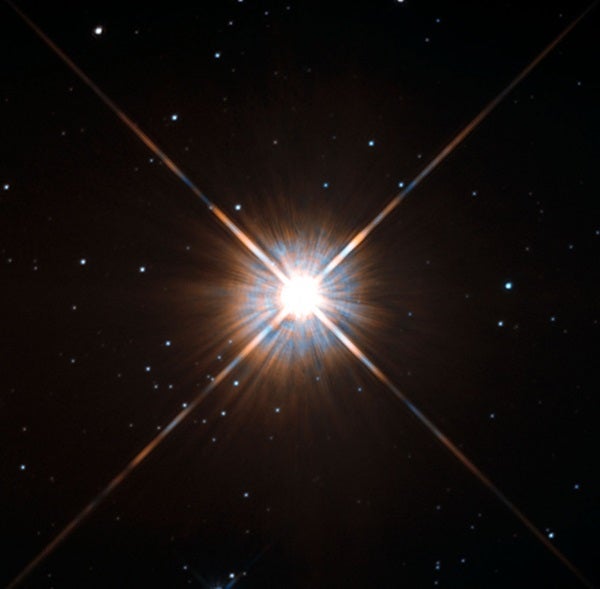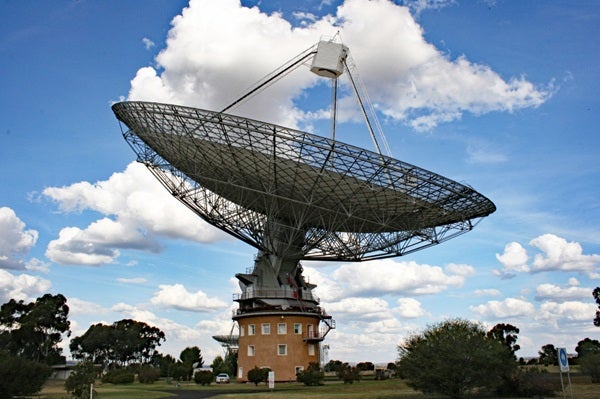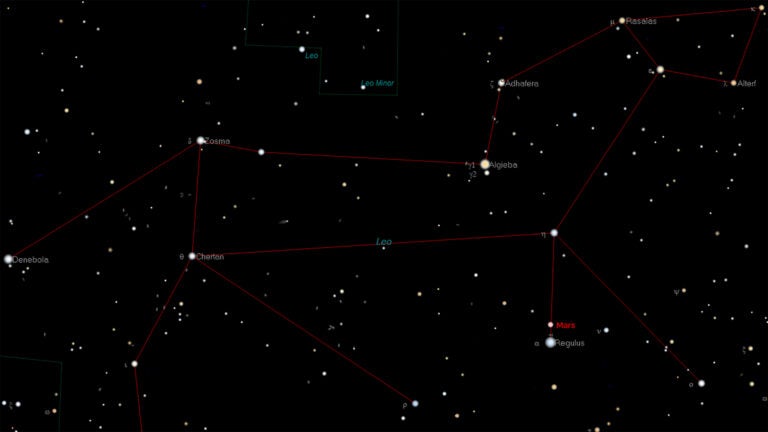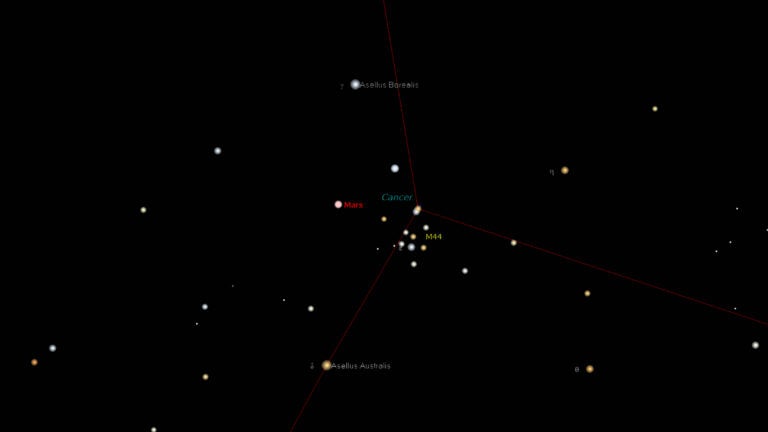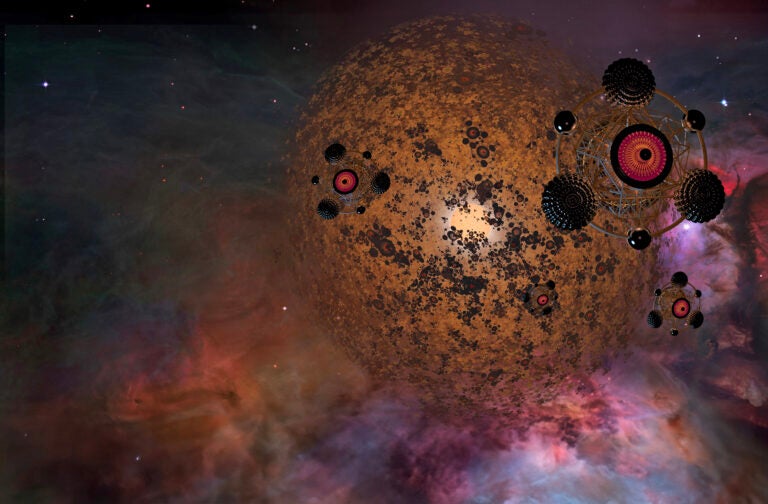The discovery was leaked to the British newspaper The Guardian, which reported the story December 18. Researchers subsequently granted interviews to Scientific American and National Geographic. Since then, however, the discovery team has remained tight-lipped about the signal.
But the information revealed to date is intriguing.
A strange signal
The 64-meter Parkes radio telescope in Australia picked up the faint signal in April and May 2019 while observing Proxima Centauri, a red dwarf 4.25 light-years from Earth. Notably, this feeble star has at least two planets, one of which is a super-Earth with at least 1.17 Earth masses that orbits in the star’s habitable zone — the region around a star where a planet with the right conditions could host liquid water on its surface.
Astronomers were using Parkes to catch radio emission from powerful flares shooting off the star. But the $100 million Breakthrough Listen project, the world’s most advanced SETI endeavor, was piggybacking on the observations to simultaneously search for alien signals.
In late October 2020, Breakthrough Listen intern Shane Smith, an undergraduate at Hillsdale College, found a narrowband transmission at a frequency of 982.002 megahertz — in a portion of the radio spectrum rarely used by human-made transmitters — buried in the data.
Although the press reports are a bit unclear on exactly how and when Parkes detected the signal, it apparently showed up during five 30-minute periods over several days, all while the telescope was pointing directly at Proxima. Notably, when the telescope was turned away from the star, the signal vanished. Ultimately, the signal’s origin appears tightly constrained within a 16′-wide circle — roughly half the size of the Full Moon — around Proxima Centauri on the sky.
Breakthrough Listen employs software filters that reject the cacophony of signals originating from Earth or Earth-orbiting satellites to isolate those coming from deep space. But this transmission was unlike anything the project has previously encountered. Team leader Andrew Siemion told Scientific American, “It has some particular properties that caused it to pass many of our checks, and we cannot yet explain it.”
Digging deeper
The team has dubbed the signal BLC-1, for Breakthrough Listen Candidate-1. And they are emphasizing the word “candidate.”
Pete Worden, executive director of Breakthrough Listen’s parent organization, Breakthrough Initiatives, told Scientific American that the signal is 99.9 percent likely to be human radio interference. On December 19, he tweeted: “At this point we have some interesting signals we believe are interference but as of yet have not been able to track down the source.”
Based on the information that has been made public, the signal was concentrated into an extremely narrow range of frequencies — the hallmark of an artificial signal and distinctly unlike all known natural radio sources. The transmission was apparently monotone, meaning it was not modulated in a manner that conveys more complex information.
Over the course of the observations, it increased in frequency — essentially rising in pitch — by an unspecified amount, suggesting a source moving toward the telescope. “It could be from the orbital motion of a planet, or from a free-floating transmitter, or from a transmitter on a moon,” Penn State University astronomer Jason Wright wrote on his blog.
But he quickly added, “The most likely explanation is probably that it is a source on the surface of the earth whose frequency is, for whatever reason, very slowly changing.”
Astronomers think the fact that the signal is very close to an integer MHz value strongly suggests a human origin, Wright also wrote. After all, why would aliens transmit signals that match such a specific value of a human-derived unit of measurement?
What if?
On the off chance that BLC-1 turns out to be the real deal, it would raise the question of whether humanity should send a reply — something within our current means. Our message could potentially stimulate a response in less than a decade, starting an interstellar dialogue well within the lifetimes of most people alive today. That’s an incredibly exciting prospect.
But this possibility also raises concerning questions about our conversation partners: Who are they? What are their motives? Do they pose a threat? Technologically advanced beings at Proxima Centauri could reach Earth in a few decades if they can traverse interstellar space at an appreciable fraction of the speed of light. After all, Breakthrough Initiatives is planning just such a venture with its Starshot project, which plans to use a powerful laser to accelerate about a thousand ultra-lightweight, centimeter-sized craft attached to light sails. Such craft can theoretically attain 15 to 20 percent the speed of light, meaning they could reach the Proxima system in 20 to 30 years.
And what would such a nearby alien civilization know about us?
“I find it difficult to believe that a technological civilization on Proxima Centauri would not know about life on Earth,” says astrobiologist Jacob Haqq-Misra of the Blue Marble Space Institute of Science. “The only way they would not know is if they are almost exactly at our present-day level of technology, so that we are discovering them the same time they are discovering us. This is generally unlikely, because even a thousand-year difference between our two civilizations — a short time in astronomy — would lead to drastic differences in our detection capabilities.”
Next steps
The Breakthrough Listen team is now working on two scientific papers that will report more details on BLC-1. They are also undoubtedly trying to identify all possible sources of terrestrial interference, as well as determine whether the signal repeats by observing again with Parkes and other radio telescopes, or combing through archival data.
At least for now, BLC-1 is the most tantalizing SETI signal since Ohio State University’s Big Ear radio telescope picked up the powerful “Wow!” signal on August 15, 1977. That 72-second narrowband transmission emanated from the direction of Sagittarius. The signal has never repeated, but it also remains unexplained.
If BLC-1 is simply — as is most likely — human interference, then it’s no big deal, perhaps just a bit of an embarrassment to whomever leaked the story to The Guardian. But if BLC-1 is a bona fide extraterrestrial signal, it could change the course of world history. An alien radio transmitter just 4.25 light-years from Earth would be a game changer. No doubt this is why the discovery team has gone silent and is working hard to get its analysis right.
Even if BLC-1 turns out to be human radio interference, detailed analysis will help SETI researchers refine their search parameters to make later searches more efficient.
“Ultimately, I think we’ll be able to convince ourselves that [BLC-1] is interference. But the end result will certainly be that it will make our experiments more powerful in the future,” Siemion told National Geographic.

